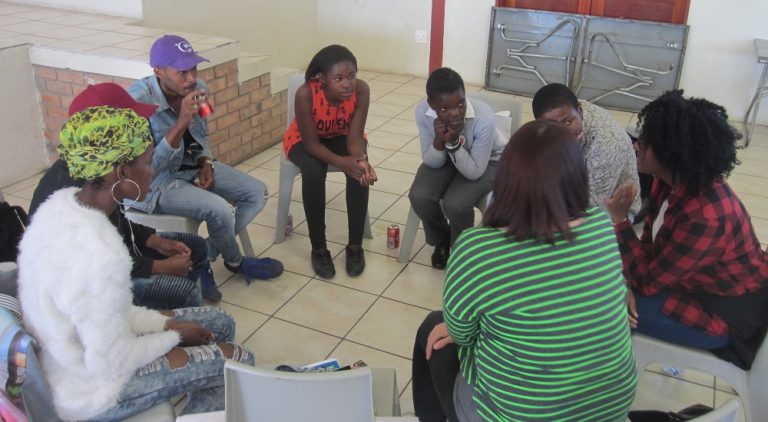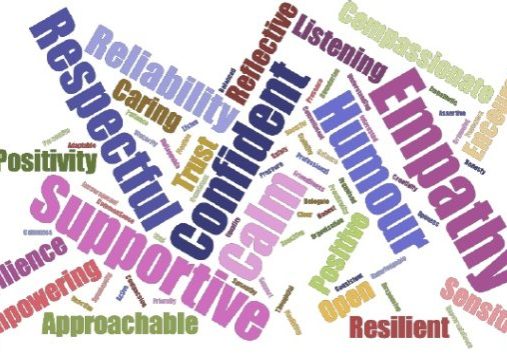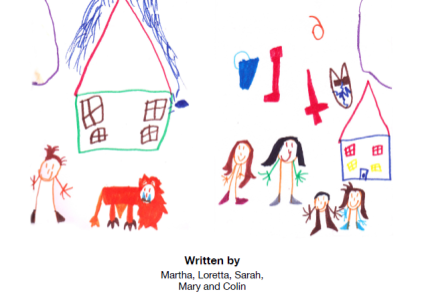Boingboing blogs from… Leandra
Collaborative arts workshop in Leandra, 23 June 2017
by Naz Biggs, Boingboinger and (nearly) a PhD Student
If you’ve been following our Drought Resilience project you may know that we have been in South Africa working with young co-researchers from Leandra. If you haven’t, read some of our earlier blog posts to find out a bit more about the project. This blog has been put together by Naz, a young co-researcher from the UK who grew up in challenging circumstances in the UK; she didn’t have drought to deal with, but other issues of considerable complexity for sure. Naz works for Boingboing and came to Leandra to support the research process. You can read another blog by Naz about her experiences of attending the Pathways to Resilience Conference in Cape Town in June 2017.
It was Friday 23rd June 2017, and we were buzzing to be going to Leandra again. For some of us it was our first time meeting the young co-researchers, however, all of us (from University of Pretoria, University of Brighton, Boingboing, and also Khulisa community organisation) were eager to hear what our young co-researchers had come up with. As part of our aims for the project we were using collaborative arts-based methodologies to enable our young co-researchers in Leandra to explore and communicate their personal, family, community, cultural and environmental responses to times of drought. The young co-researchers had previously been given a research pack to support conversations they would have with at least one elder in their community, to explore how they dealt with drought.
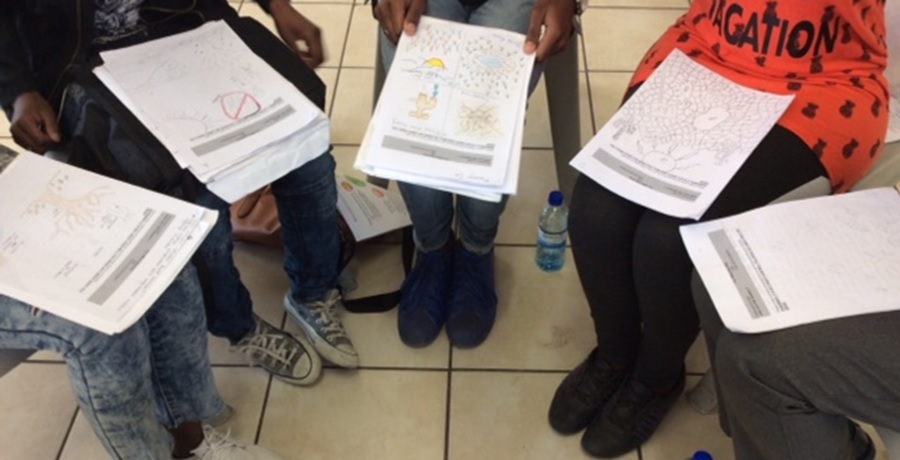
As we were split into groups (with at least two Master’s students from the University of Pretoria to 5-6 young co-researchers) the young co-researchers excitedly got their research packs out. The packs had a colourful array of drawings and notes from their discussions with their elders.

We then looked at the images and conversations they had from their elders and discussed some of the similarities. We were asked by Selogadi (our arts activist who was leading the session) to pick out the similarities between the drawings. We were then asked to create three still images with our bodies that related to the questions: ‘How do you know there is a drought?‘ and, ‘What does your community do when there’s a drought?‘ Once we had created a still image, we then had to create a sentence that related to each of the images.

Image one
Sentence created: The high temperatures dries the land and the plants are dying.
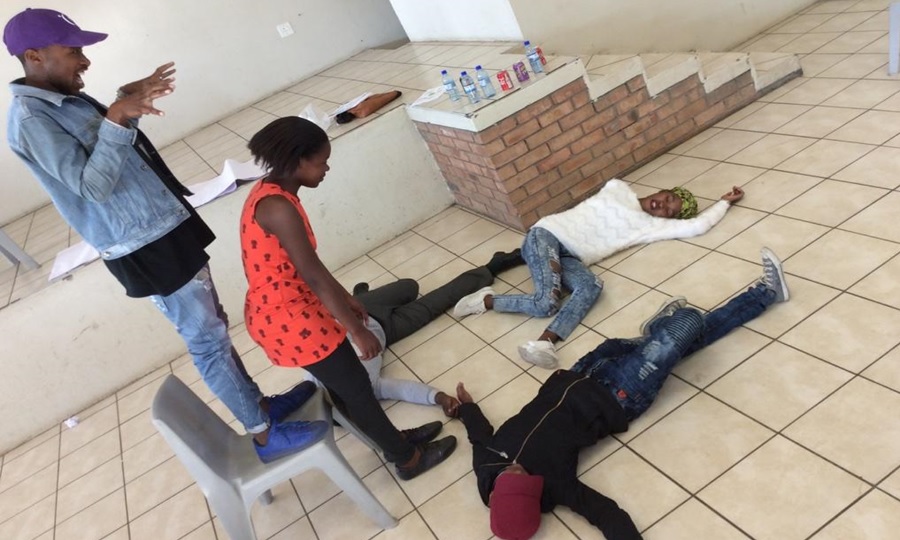
This image shows the hot blaring sun, represented by the young man standing on the chair with open hands. The hands being open show the force and strength of the sun. The young co-researcher standing in front of him represents a dying tree, which is why her body is deflated and she is slightly bent over. The three remaining young co-researchers represent the dry land. Their bodies are placed in awkward positions to show the cracks in the land that form during droughts. When we opened up this conversation a little more, one of the co-researchers said that her grandmother keeps her mind busy by looking after the animals more. It became clear that their grandmothers had a very big influence on the way they responded to drought. All the members of our group had done their research with their grandmothers. It was clear that they were important members of their community.
Image two
Sentence created: The closing of the shops causes unemployment
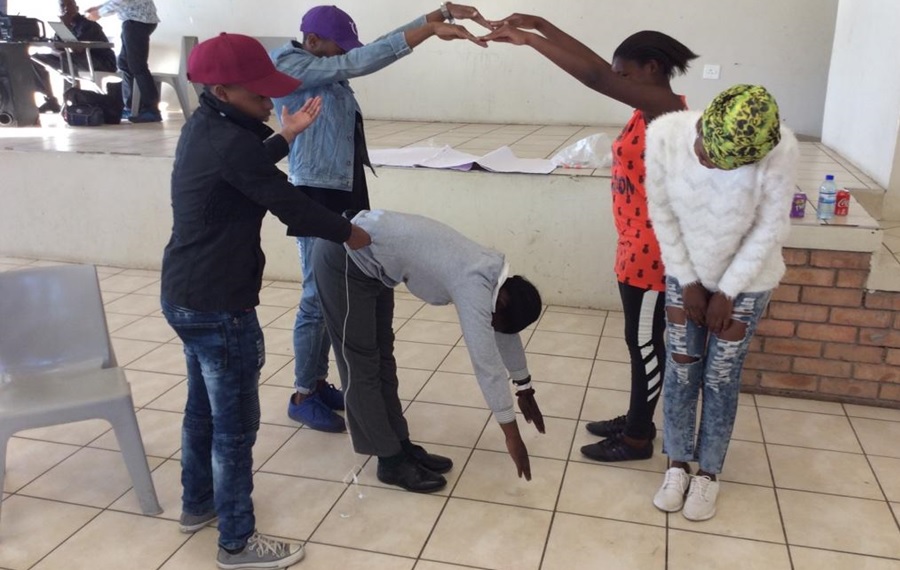
Here the young co-researchers discussed that during times of drought there is higher unemployment. Shops begin to close and people lose their jobs. This is what the image shows. The two young co-researchers with their arms up and arched are the structure of the shops. The girl bent over represents the shop door being closed with the shop keeper locking the door. The girl with her head bent on the right is a person that has just lost their job and is very upset about this. We discussed how drought has a big impact on unemployment in communities, which can become worrying for young people. The co-researchers in our group said that when there is high unemployment, there can be a worry that school fees won’t be paid.
Image three
Sentence created: Engaging and playing activities keeps us resilient
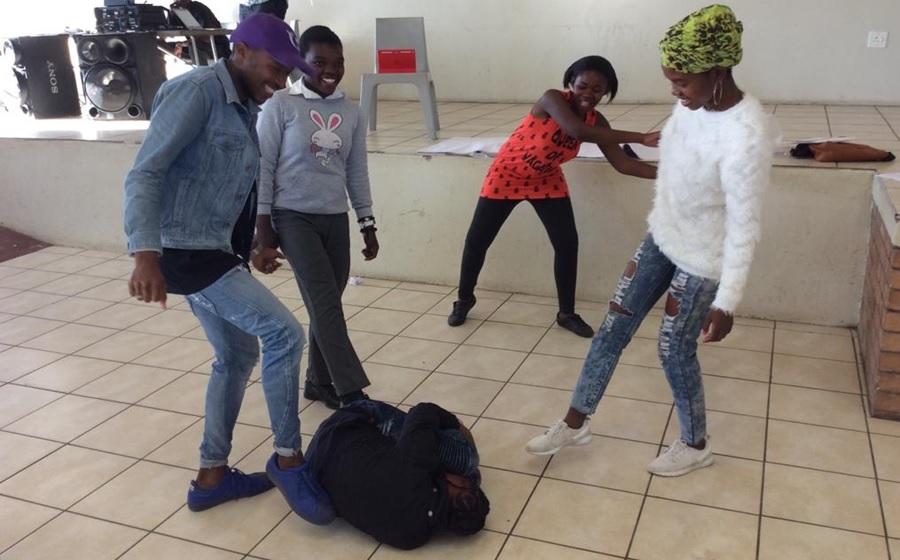
When we discussed how they coped with drought, the young co-researchers said that often they would play to take their mind off their problems. Here the image shows a young person curled into a ball being the ‘football’ and all the other young people trying to kick the ball. The young people said that even though drought has an impact on their community and lives, they always make sure they do fun things. This may be playing sport, or going to church.
Unfortunately, due to time constraints we were unable to get into deeper discussions about some of the conversations they had with their elders. But, it was so refreshing to see the co-researchers discuss the different ways they coped with drought. The young people have a lot of respect for their elders in their community. They explained to us how much their wisdom helped in times of drought.
This session was aimed at preparing us for the following day when we were going to create more images and grow them into stories to be filmed. The young co-researchers from Leandra were enthusiastic and really got in their co-researcher roles. They were creative and really inspiring when they explained the reasoning behind their images.
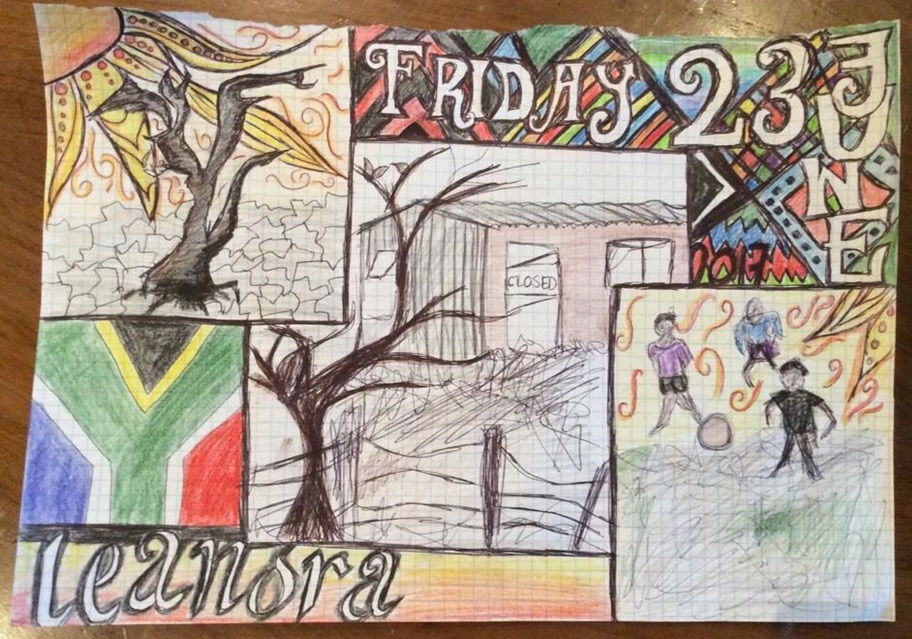 Naz created a drawing of the still images that summarise the first day in Leandra.
Naz created a drawing of the still images that summarise the first day in Leandra.
